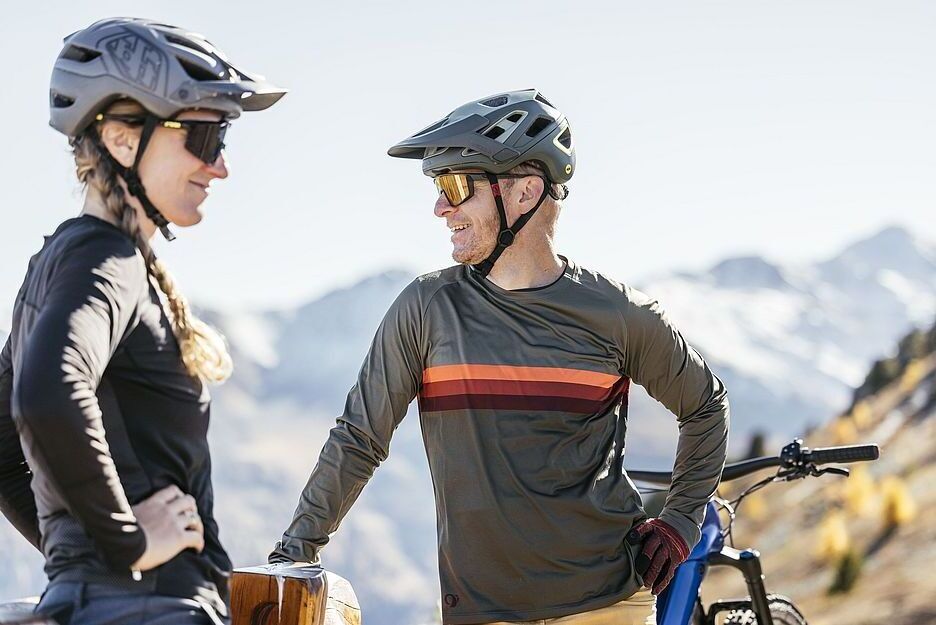Bike Clothes and Safety Gear
Good bike clothes and safety are crucial for cyclists. They protect you from weather and crashes, and can boost your performance..
New cyclists often wonder what to wear. You don't need special gear to start riding. But bike-specific clothing can make rides more comfortable. It can also make you more visible to drivers.
Not all bike clothes are flashy. Many brands now make cycling gear that looks like regular clothes. This is good news if you're not into the typical "cyclist look."
Remember, the goal is to ride safely and comfortably. Choose gear that helps you do that, whether it's specialized or not.
Now you should take a closer look at the snow and protect it from your eyes.
Bike Gear: Why It Matters
Good bike clothes and safety gear do more than make you look like a pro. They keep you safe and comfortable.
Weather Protection:
Quality gear regulates your body temperature. It keeps you warm in winter and cool in summer. It also shields you from rain and sun.
Safety:
Bright colors and reflective bits make you visible to drivers. Some clothes even have built-in padding to protect you if you fall.
Comfort:
Bike clothes fit well and move with you. They're made from special fabrics that keep sweat away from your skin. This stops chafing on long rides.
Durability:
Good gear lasts longer. It can handle lots of use and washing without falling apart.
Injury Prevention:
A good helmet can save your life in a crash. Padded gloves and shorts protect your hands and backside on rides.
Standards:
Quality gear meets safety standards. This is smart for all cyclists.

E-bike Gear Essentials
Helmets:
Protect your head. Cost: $50-$250
Jerseys:
Keep you cool and dry. Have pockets for stuff. Cost: $60-$150
Shorts/Bibs:
Padded for comfort. Prevent chafing. Cost: $70-$200
Shoes:
Help you pedal better. Different types for different riding. Cost: $100-$400
Gloves:
Protect hands, improve grip. Cost: $20-$70
Lights/Reflectors:
Make you visible. Important for night riding. Cost: $20-$200
Jackets/Vests:
Keep you dry and warm. Cost: $70-$250
Eye Protection:
Shield from sun and debris. Cost: $20-$200
Arm/Leg Warmers:
Add warmth when needed. Cost: $30-$80
Shoe Covers:
Keep feet dry and warm. Cost: $30-$70
Base Layers:
Manage sweat, add insulation. Cost: $40-$100
Caps/Headbands:
Fit under helmet, manage sweat. Cost: $15-$50
Neck Warmers:
Keep neck warm. Cost: $15-$50
Windbreakers:
Light protection from wind. Cost: $50-$150
Knee/Elbow Pads:
Protect joints in falls. Cost: $40-$150
Body Armor:
For extreme mountain biking. Cost: $100-$300
Begin with essentials like a helmet and comfortable clothes. Add more as you ride more often or in different conditions.
Picking the Right Bike Gear
Know What You Need:
- Think about your weather. Cold? Get warm, waterproof stuff. Hot? Go for breathable, sun-blocking gear.
- Your riding style matters. Road bikers want light, aero gear. Mountain bikers need tough, protective stuff.
Safety First:
- Get a good helmet. Make sure it fits and meets safety standards.
- Choose bright colors and reflective gear to be seen.
Fit and Comfort:
- Try gear on before buying. It should be snug but not tight.
- Remember, comfort while riding is different from standing.
Be Flexible:
- Layer up. Mix and match for different weather.
- Look for convertible gear like jackets with removable sleeves.
Materials Count:
- Pick cycling-specific fabrics. They handle sweat and movement better.
- Avoid cotton. It holds sweat and can chafe.
Get Advice:
- Read reviews and ask other cyclists.
- Local bike shops often have good tips.
Take Care of Your Gear:
- Follow washing instructions to make your gear last.
Experiment:
- Try different brands and styles. What works for others might not work for you.
Spend Smart:
- Invest in key items like helmets and shoes.
- You can go cheaper on other stuff at first.
Finding the right gear takes time. Don't be afraid to try new things as you figure out what works best for you.
Law Regulations about Bike Apparel and Safety Gear
Helmets:
- Many provinces make kids wear helmets. Some, like British Columbia, make everyone wear them.
- Helmets must meet safety standards.
Lights and Reflectors:
- Most places say you need a white light in front and a red light or reflector in back when it's dark.
- Reflective clothes are a good idea, sometimes required.
Other Gear:
- Bikes often need a bell or horn.
- Working brakes are a must.
Some Local Rules:
- British Columbia: Everyone wears helmets. Night riders need lights.
- Ontario: Kids under 18 wear helmets. Reflective stuff recommended at night.
- Quebec: Helmets suggested but not required. Bikes need reflective parts and a bell.
Rules can change. It's smart to check your local laws. The main idea is to be safe and visible when you ride.
Wrapping It Up
Look, bike rules in Canada mostly care about helmets and being seen. But don't just stop there. Each place has its own rules, so check what's up where you live.
Even if the law doesn't say you have to, wearing good safety gear is just smart. Helmets, bright clothes, lights - they all help keep you safe.
When you're picking out bike stuff, think about what it does, not just how it looks. Yeah, riding fast is a rush, but it can be risky too. So choose your gear carefully.
Don't just go for the pricey stuff thinking it's the best. Do your homework. Read what other riders say. Try things out. Learn about the materials. Become a pro at picking what works for you.
And hey, if you're in the market for a new e-bike, swing by Movin Ebikes at 654 College Street in Toronto. We'd love to help you out.
Stay safe and have fun out there!



